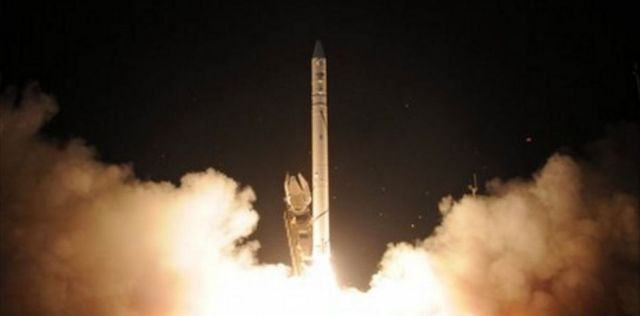As observers of Chinese military-technical specialized publications note, on December 6, 2019, the Israeli missile forces conducted another control and test launch of the Jericho-3 ballistic missile at a target area in the Mediterranean Sea. It should be noted that the countries of the Muslim world, namely the Kingdom of Saudi Arabia and the Islamic Republic of Iran, pay the greatest attention to this launch. Official Riyadh is quite zealous about the process of developing the capabilities of the rocket forces of the Jewish state, since the KSA has significant financial capabilities and practically does not experience external sanctions pressure in the military-technical field.
The Iranian leadership is also concerned about such tests, which indicate that the Israel Defense Forces have the ability to launch a massive missile strike against any aggressor state.
According to Chinese experts, the intelligence services of Iran and the KSA are most active in establishing the true scale and capabilities of the Israeli missile forces. However, the military specialists of the Jewish state are professionals in ensuring the highest level of secrecy of strategic units that are located on the territory of the country.
Rocket forces of Israel. Stages of growth.
The need to form units of rocket forces is conscious, since the main regional opponents of the Jewish state have missile or even nuclear missile forces that are capable of striking at the territory of Israel. The possibility of creating an RV appeared in Israel after the signing in 1963 with the military-political leadership of France of the relevant documents on the joint development of short-range ballistic missiles (from 235 to 500 km.), which can now be attributed to operational and tactical missile weapons.
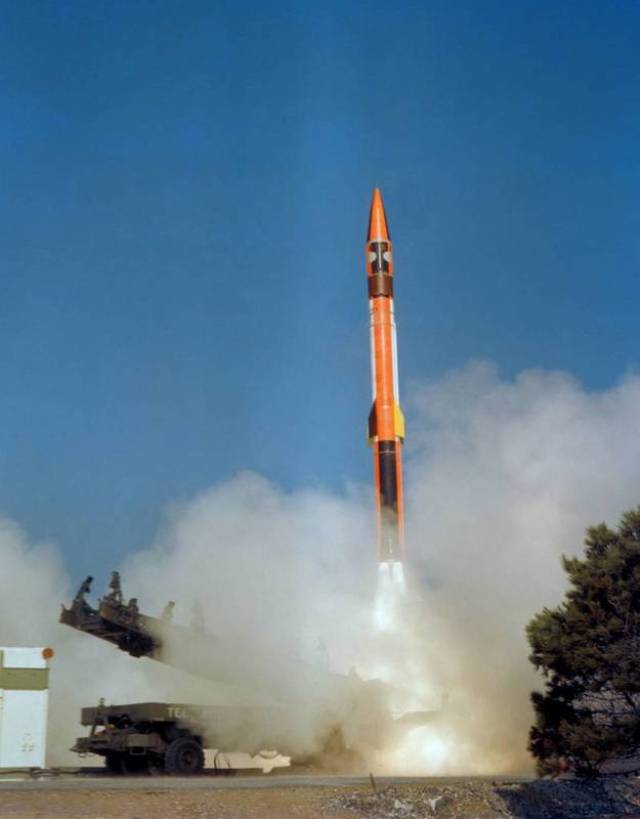
MD-620 rocket test launch
On the French side, the well-known company Dassault took part in the program of creating the first ballistic missile, and the Israeli side was represented by IAI. It is known that French specialists provided valuable support in the creation of the first model of missile weapons – MD-620.
The test launch of this missile was carried out in 1965, but three years later the Franco-Israeli military-technical cooperation on missile issues was interrupted. By that time, Israel's expenditures in this area had already amounted to $1 billion. According to Chinese experts, in such a situation, American specialists came to the aid of Israeli rocket designers. However, official Washington demanded that the Israeli side not develop intercontinental-level ballistic missiles.
Jericho-1 Rocket
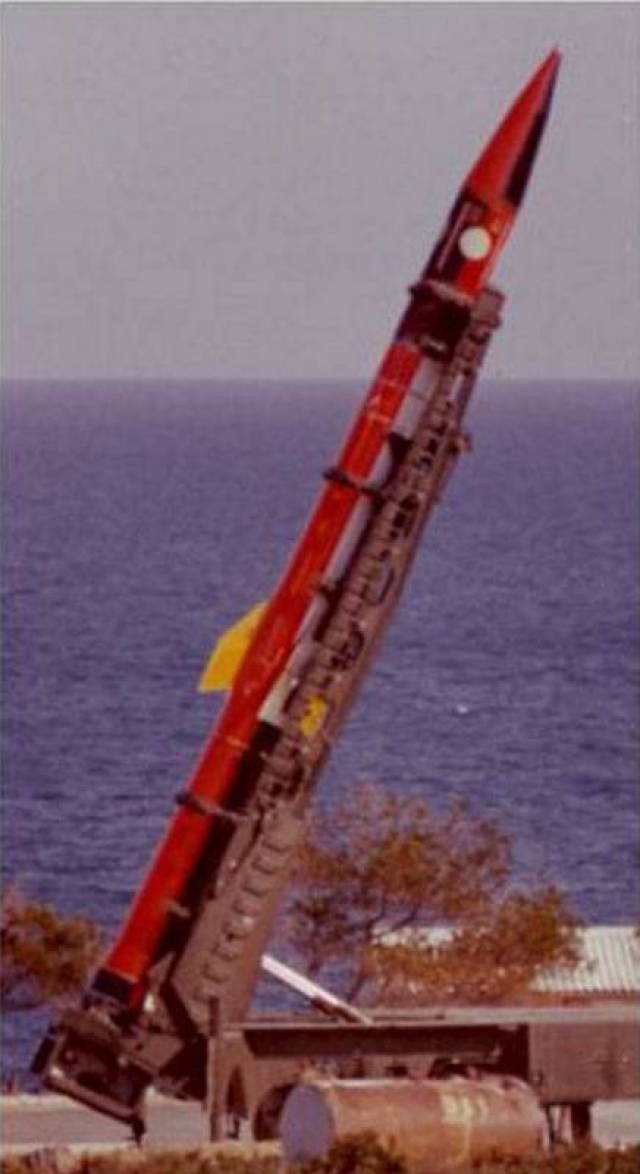
Jericho-1 Rocket
The result of the first stage of American-Israeli cooperation was the creation of a short-range ballistic missile (BR) "Jericho-1". With a length of 13.4 m and a diameter of 0.8 m, this rocket has a launch mass of 6700 kg, of which 450 to 800 kg falls on the warhead. The length of the first stage is 4.05 m (weight 1950 kg), and the length of the second stage is 4.35 m (weight 650 kg).
It should be noted that Israeli chemists have established the production of solid rocket fuel on the territory of the country. In addition, already at that time, the production of most rocket engine components was localized in Israel.
According to some analysts, under the head fairing of the Jericho-1, there may be both a conventional warhead and a nuclear one with a capacity of 20 kT, i.e. the missile in question is, in fact, a carrier of tactical nuclear weapons. The main disadvantage of the Jericho-1 is the extremely high coefficient of probable deviation, which reaches 1000 m, which at that time was twice as large as that of the Soviet P-17.
With such low accuracy, there is no possibility of hitting the mine launchers of ballistic missiles of a likely enemy. In fact, Jericho-1 makes it possible to strike at such large objects of basic infrastructure as aviation and naval bases, power plants, oil refineries, etc.
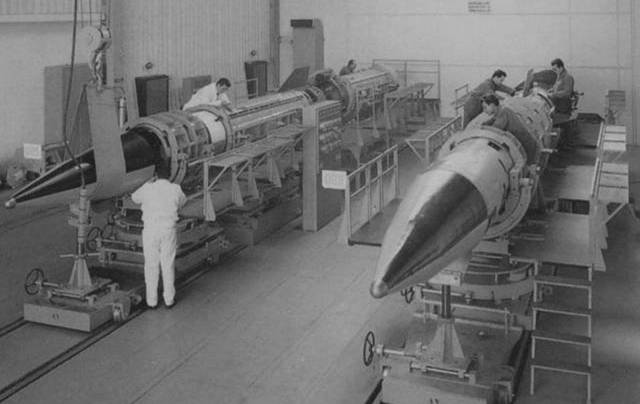
"Jericho-1" in the shop
According to the estimates of foreign experts, about 100 Jericho-1 BRS (produced in the period from 1971 to 1978) were put into service with the missile units of the Israel Defense Forces, some of which are placed in mine launchers, and some are placed in transport containers intended for transportation to the launch sites.
The second stage of evolution
The second stage of the evolution of the Israeli missile forces is associated with the development of a medium-range ballistic missile (BRSD) under the designation "Jericho-2", which began in 1977. With regard to the design process of this BRSD with a launch range from 1300 to 3500 km, it is known that from May 1987 to March 1992, Israeli designers carried out seven control and test launches of Jericho-2 in the target area in the Mediterranean Sea.
It was these tests that attracted the attention of the American intelligence services, who carefully analyzed the information obtained with the help of radio intelligence units, and came to the conclusion that the Israeli designers managed to significantly improve accuracy. It should be noted that after the Iraqi Armed Forces attempted a rocket attack on Israel in 1991, the development of the Jericho-2 accelerated. It is known that the first Jericho-2 missiles went on combat duty only in 1994. At the launch range indicated above, most of the capitals of the Muslim countries of the Middle East are in the radius of destruction.
According to open sources, the Jericho-2 BRSD has a length of 14 m, the hull diameter has been increased to 1.56 m, and the starting mass has been increased to 22 (according to other sources, 26) tons. Some experts suggest that the mass of an empty rocket without fuel and a warhead is only 12 tons, i.e. the considered BRSD is one of the lightest in its class. The solid-fuel powerplant Castor-120 from the American company Thiokol is used as the engine.
According to Chinese specialized publications, the first stage of the considered BRSD has a total mass of 10970 kg (operating time 52 sec.), and the second stage 9965 kg (operating time 33 sec.). The mass of the warhead is 1000 kg and a nuclear warhead with a capacity of 1 MT in TNT equivalent may well be placed under the fairing.
The orientation of the missile and the warhead in space over most of the trajectory is provided by an inertial guidance module, and as it approaches the target area, the onboard computer connects the guidance radar station, which is copied from the American Pershing-2 BR.
As you know, it was on the basis of the Jericho-2 BRSD that the Shavit launch vehicle was developed, which Israel uses to launch the payload into near-Earth orbits. In most cases, the Shavit launches took place normally, which allowed the Israeli military to launch reconnaissance satellites into space, allowing them to collect data on the situation and military activity in neighboring states.
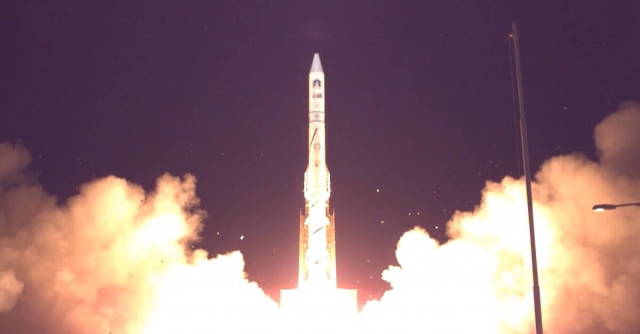
Launch of the Shavit launch vehicle
Intercontinental range missile
At the third stage of evolution, Israeli designers have developed a three-stage BR "Jericho-3". Its first test launch took place in 2008 . With a length of 15.5 m, a body diameter of 1.56 m, the maximum take-off weight of this BR is estimated at 29 tons, which indicates an increased supply of solid fuel, which allows you to overcome up to 5000 km.
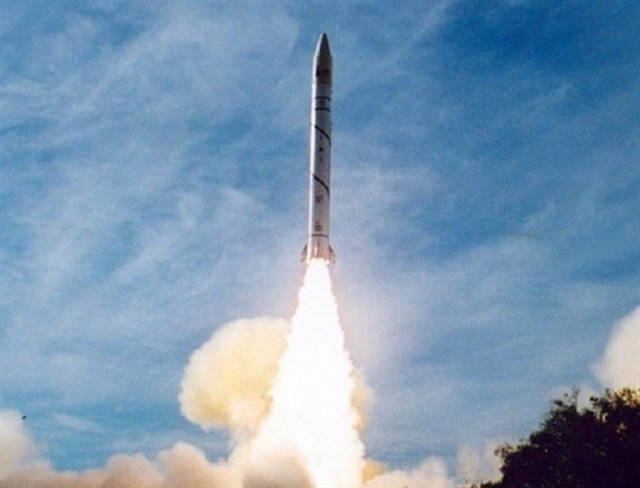
BR "Jericho-3"
In fact, Israeli designers have been able to go through a difficult path of development of rocket technology for 50 years and have created an intercontinental ballistic missile. Some Chinese experts believe that in the future, a missile with a launch range of 7800 km may appear in the armament of AOI missile units.
In addition to the above, Chinese experts note that the Israel Defense Forces carefully hides any information about the missile forces and their likely targets. Especially carefully guarded secrets about the true number of BR of these models, their locations, as well as work on false targets and maneuvering warheads.
Based on the materials of Chinese military-technical publications
